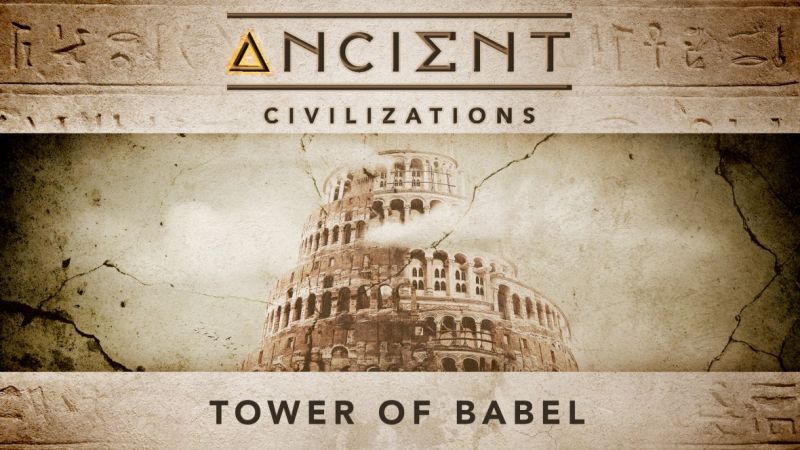Ancient Civilizations – Tower of Babel: Legends tells us that language once unified all of humanity, but a detrimental blunder led to this once-unifying force becoming a means of mass confusion. Beyond the biblical account, researchers found most modern languages do indeed stem from a singular matrix language. Could it be this mother language was a gift from ancient gods who seeded the birth of humanity and gave rise to ancient civilizations? By understanding the power of the spoken word and rediscovering this ancient, forbidden language, we may find returning to unification is an individual journey beholden with many paths to transcendence.
Since times immemorial, humankind has searched for the answers to who we are, where we came from and why are we here. Embedded into ancient mythology and our forgotten history, is a code which unlocks our connection with transcendence and paves the way for a new golden age.
Ancient Civilizations – Tower of Babel
The Tower of Babel narrative in Genesis 11:1–9 is an origin myth meant to explain why the world’s peoples speak different languages. According to the story, a united human race in the generations following the Great Flood, speaking a single language and migrating eastward, comes to the land of Shinar. There they agree to build a city and a tower tall enough to reach heaven. God, observing their city and tower, confounds their speech so that they can no longer understand each other, and scatters them around the world.
Some modern scholars have associated the Tower of Babel with known structures, notably the Etemenanki, a ziggurat dedicated to the Mesopotamian god Marduk in Babylon. A Sumerian story with some similar elements is told in Enmerkar and the Lord of Aratta.
There is a Sumerian myth similar to that of the Tower of Babel, called Enmerkar and the Lord of Aratta, where Enmerkar of Uruk is building a massive ziggurat in Eridu and demands a tribute of precious materials from Aratta for its construction, at one point reciting an incantation imploring the god Enki to restore (or in Kramer’s translation, to disrupt) the linguistic unity of the inhabited regions—named as Shubur, Hamazi, Sumer, Uri-ki (Akkad), and the Martu land, “the whole universe, the well-guarded people—may they all address Enlil together in a single language.” In addition, a further Assyrian myth, dating from the 8th century BC during the Neo-Assyrian Empire (911–605 BC), bears a number of similarities to the later written biblical story.




